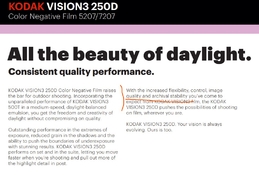Bleaches become stronger at lower pH, so typical commercial bleaches operate somewhere between pH 4 and 5. These bleaches are typically followed up by a neutral fixer at pH 6.5, which makes this neutral fixer the last concentrated liquid to hit the film.
Many dyes are weak acids, and their exact hues are affected by their protonization state, i.e. they have different hue at low pH (with proton) versus high pH (without proton). Since we want well defined color hues, we need to make sure, that the last concentrated bath (which can influence the protonization state of the dyes) has a pH close to 6.5.
In case of BLIX we don't have this fixer bath, therefore the BLIX itself must have pH 6.5. This weakens the already weak ferric EDTA bleach part, but these BLIXes still work, because thiosulfate is a stronger counter anion than bromide.
Regarding
@The Black Pharaoh 's BLIX formula: several decades ago Ilford published a patent for ferric EDTA based bleaches. Ilford discovered, that a slight excess of EDTA vs. ferric ion improved bleaching performance. Ilford put this excess at somewhere 5%. Kodak was caught cold by Ilford in this patent, until they made the lucky find, that 1% excess EDTA worked even better than the 5% patented by Ilford.
if you have pure ferric EDTA, some outer electrons of the ferric ion do not bind so well to the EDTA. These incomplete complexes tend to form clusters. These clusters are huge and poorly mobile, which leads to reduced bleach speed. The excess EDTA shifts the balance closer to ferric EDTA or ferric EDTA
2 and thereby reduces the problem.
One more factlet: EDTA binds much stronger to ferric ion than PDTA, therefore ferric EDTA bleaches are milder than ferric PDTA bleaches. C-41 materials were at some point tweaked to handle the stronger ferric PDTA bleaches, but E-6 materials never were. Now if you add PDTA instead to EDTA, you may end up with some mixed complexes of ferric ion, EDTA and PDTA, and I would expect these complexes to be stronger oxidizers than ferric EDTA with excess EDTA. This is much less of a problem than all these popular ferricyanide bleaches, but at least you know, that you are somewhat out of spec for E6. C-41 should be fine, though.
Conclusions:
- I would use Na2-EDTA or EDTA instead of PDTA, and I would reduce the amount to about 0.5g.
- I would also reduce the Sodium Sulfite content of your BLIX to about 10 g/l. If you add more stuff to oxidizer+fixer, you reduce effectiveness of the bleach (search for "ionic strength")
- I do like the 0.1g/l Mercaptotriazole, this amount matches my experience
- If you reduce the 13g PDTA to 0.5g Na2-EDTA, then you can also reduce the amount of Sodium Carbonate in your BLIX.
- EDTA is a very good buffer through a wide pH range, therefore you can adjust pH with NaOH instead of Na2CO3.











